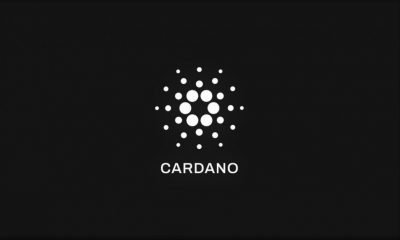Avalanche Investor
Investing In Avalanche (AVAX) – Everything You Need to Know

Securities.io maintains rigorous editorial standards and may receive compensation from reviewed links. We are not a registered investment adviser and this is not investment advice. Please view our affiliate disclosure.
Table Of Contents
Avalanche USD (AVAX +0.15%)
Since its inception in 2020, Avalanche (AVAX +0.15%) has rapidly gained traction within the blockchain industry. It has done so by positioning itself as a top competitor to the market-leading smart-contract platform, Ethereum, by focusing on high throughput, low latency, and scalability without compromising security.
Avalanche also sets itself apart through the use of a unique consensus mechanism, innovative architectural design, and a surrounding ecosystem that supports a wide range of applications, from DeFi to NFTs and beyond.
How Does Avalanche (AVAX) Work?
Avalanche (AVAX) operates on a framework designed to address the core challenges faced by its first-generation counterparts – namely, scalability, security, and decentralization.
The network’s architecture and consensus mechanism, which are at the core of its operation, enable the network to achieve its high throughput, low latency, and interoperability among different blockchains.
Three-Pronged Architecture
Avalanche is comprised of three primary, built-in, blockchains. Each of these serves a distinct function, which together form the Avalanche ecosystem:
- X-Chain (Exchange Chain): The X-Chain is dedicated to the creation and exchange of AVAX and other digital assets. It utilizes the Avalanche consensus mechanism, facilitating fast and secure transactions. This chain is crucial for managing the network’s native token and custom asset creation.
- P-Chain (Platform Chain): The P-Chain coordinates the network’s validators, manages Avalanche subnets (custom blockchains within the Avalanche ecosystem), and enables the creation of new subnets. It’s responsible for the underlying proof-of-stake (PoS) consensus protocol and staking mechanisms, serving as the backbone for the network’s decentralized security model.
- C-Chain (Contract Chain): The C-Chain enables the execution of smart contracts, supporting the Ethereum Virtual Machine (EVM). This compatibility allows developers to port existing Ethereum applications to Avalanche easily, benefiting from higher throughput and lower fees. The C-Chain is where decentralized applications and complex financial protocols are deployed and executed.
Avalanche Consensus Protocol (ACP)
The consensus mechanism is a pivotal aspect of each and every blockchain. In the case of Avalanche, the network distinguishes itself from the commonly used Proof-of-Work (PoW) and Proof-of-Stake (PoS) systems. Instead, the network employs a novel approach to consensus known as the ‘Avalance Consensus Protocol (ACP)’, which was built to offer the following benefits.
- Subsampled Voting: Unlike systems that require the participation of all validators in the consensus process, Avalanche randomly samples subsets of validators to vote on transactions. This method significantly reduces the communication overhead, allowing the network to scale and process transactions rapidly.
- Rapid Finality: Avalanche achieves transaction finality in under a second, a stark contrast to the minutes or even hours required by some PoW blockchains. This speed is crucial for applications requiring quick settlement, such as financial exchanges and payment systems.
- Energy Efficiency: The consensus mechanism is far more energy-efficient than PoW alternatives, aligning with growing concerns about the environmental impact of blockchain technology. It enables a secure and decentralized network without the need for energy-intensive mining operations.
Scalability, Interoperability, and Sustainability
When working in unison, the architecture and consensus mechanism, as described, can offer the following benefits.
- Scalability: Through its unique architecture and consensus mechanism, Avalanche can process thousands of transactions per second (tps), significantly outperforming older blockchain networks. The ability to create custom subnets further enhances the network’s scalability, as each subnet can be tailored to specific application needs and operate in parallel with others.
- Interoperability: Avalanche is designed for interoperability both within its ecosystem (among the X-Chain, P-Chain, and C-Chain) and with external blockchains. This interoperability is facilitated through bridges, allowing for the seamless transfer of assets between Avalanche and other networks, such as Ethereum.
- Sustainability: The network’s consensus model provides energy efficiency and ensures a sustainable model for network security and participation. Validators are incentivized to act honestly through staking and rewards, aligning their interests with the network’s long-term health and security.
It is the culmination of these benefits that has allowed Avalanche to position itself as a leading platform for decentralized applications, financial services, and interoperable blockchain solutions.
What is AVAX?
At the core of its functions, Avalanche makes use of ‘AVAX’ – the native token of the network. This token serves several critical functions.
- Transaction fees within the network.
- Staking as part of the consensus mechanism.
- Governance, allowing AVAX holders to vote on key network decisions.
Notably, staking AVAX tokens not only secures the network, but also provides a mechanism for token holders to earn rewards. This incentivizes participation and investment in the ecosystem’s growth.
The Evolution of the Avalanche (AVAX) Network
Avalanche was created by Emin Gün Sirer and his team at Ava Labs, a group consisting of prominent academics and professionals in computer science.
Research and Development
The foundation of Avalanche is built on its distinguishing consensus protocol. Before its launch, the team behind Avalanche published a whitepaper detailing the ACP, which quickly garnered attention for its potential to drastically improve upon the transaction throughput and confirmation times of existing blockchain networks – all while maintaining robust security.
This research phase was critical, as it laid the theoretical groundwork for the network’s approach to consensus.
Public Launch and Network Activation
Avalanche officially launched its mainnet in September 2020. The network’s activation was a significant milestone as it transitioned from theoretical research to a live, operational blockchain platform capable of supporting various applications.
Platform Development and Ecosystem Growth
Since its launch, Avalanche has seen rapid adoption and growth, with more developers choosing the platform for building decentralized applications (DApps).
The network has become a hub for innovation, particularly in the decentralized finance (DeFi) sector, where its high-performance capabilities offer a compelling alternative less capable competitors.
Key developments include the implementation of the Avalanche-Ethereum Bridge (AEB), enhancing interoperability with Ethereum, and enabling a seamless transfer of assets between the two ecosystems.
How to Buy Avalanche (AVAX)
Avalanche (AVAX) is available on the following exchanges:
Uphold – This is one of the top exchanges for United States residents that offers a wide range of cryptocurrencies. Germany & Netherlands are prohibited.
Uphold Disclaimer: Terms Apply. Cryptoassets are highly volatile. Your capital is at risk. Don’t invest unless you’re prepared to lose all the money you invest. This is a high-risk investment, and you should not expect to be protected if something goes wrong.
Coinbase – A publicly traded exchange listed on the NASDAQ. Coinbase accepts residents from 100+ countries, including Australia, Canada, France, Germany, Netherlands, Singapore, the United Kingdom, and the United States (excluding Hawaii).
Kraken – Founded in 2011, Kraken is one of the most trusted names in the industry and offers trading access to over 190 countries, including Australia, Canada, Europe, and the United States (excluding Maine, and New York).
Kraken Disclaimer: Not investment advice. Crypto trading involves risk of loss. Payward European Solutions Limited t/a Kraken is authorised by the Central Bank of Ireland.
How to Store Cardano (ADA)
Like most digital assets, various services support storing Avalanche (AVAX)—these range from exchanges to non-custodial software wallets and hardware wallets.
The phrase ‘not your keys, not your coin’ also rings true for Avalanche (AVAX), and for those who prioritize the safety of their holdings, opting for a hardware wallet or at least a non-custodial software variant is recommended.
Avalanche (AVAX) – Looking Forward
As Avalanche continues to evolve, it is poised to introduce further innovations and improvements. The network roadmap further enhances scalability through subnets, expands interoperability with other blockchain ecosystems, and continuously improves the user and developer experience.
Avalanche’s rise from a research concept to one of the fastest-growing blockchain platforms is a testament to just how quickly the industry can recognize and adopt high-potential projects.
Daniel is a big proponent of how blockchain will eventually disrupt big finance. He breathes technology and lives to try new gadgets.
You may like
-


Investing In Cardano (ADA) – Everything You Need to Know
-


Investing In Solana (SOL) – Everything You Need to Know
-


Investing In Ethereum (ETH) – Everything You Need to Know
-


Understanding the Ethereum Virtual Machine (EVM)
-


Bitcoin Fundamentals Will Allow it to Endure Near Any Crisis
-


How to Buy Avalanche (AVAX) in 4 Easy Steps (2025)